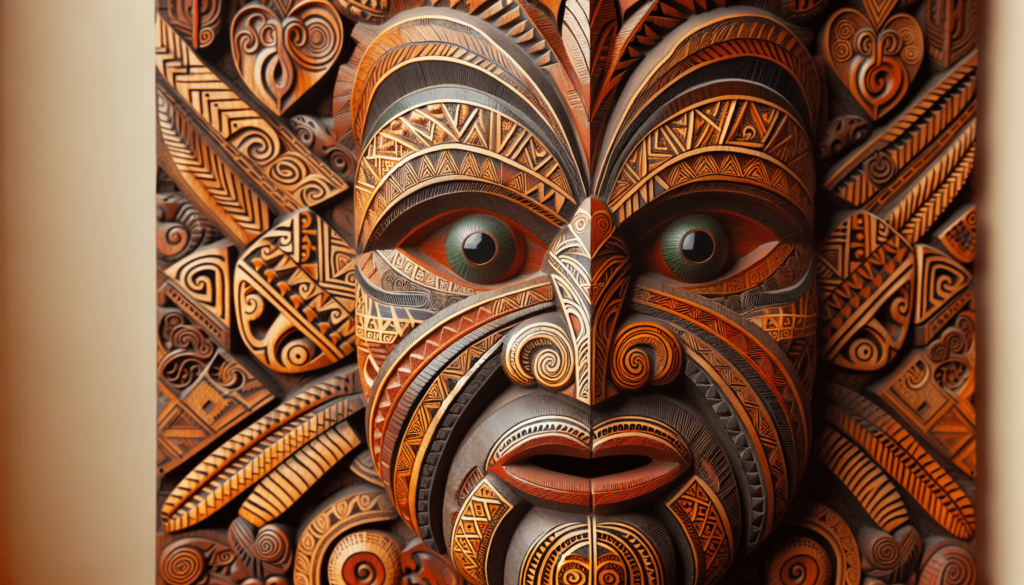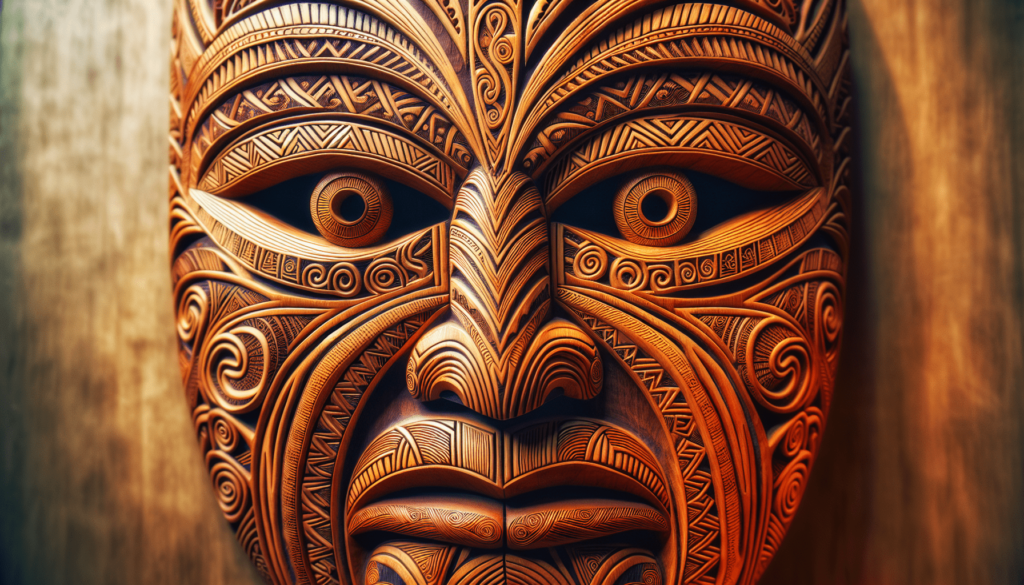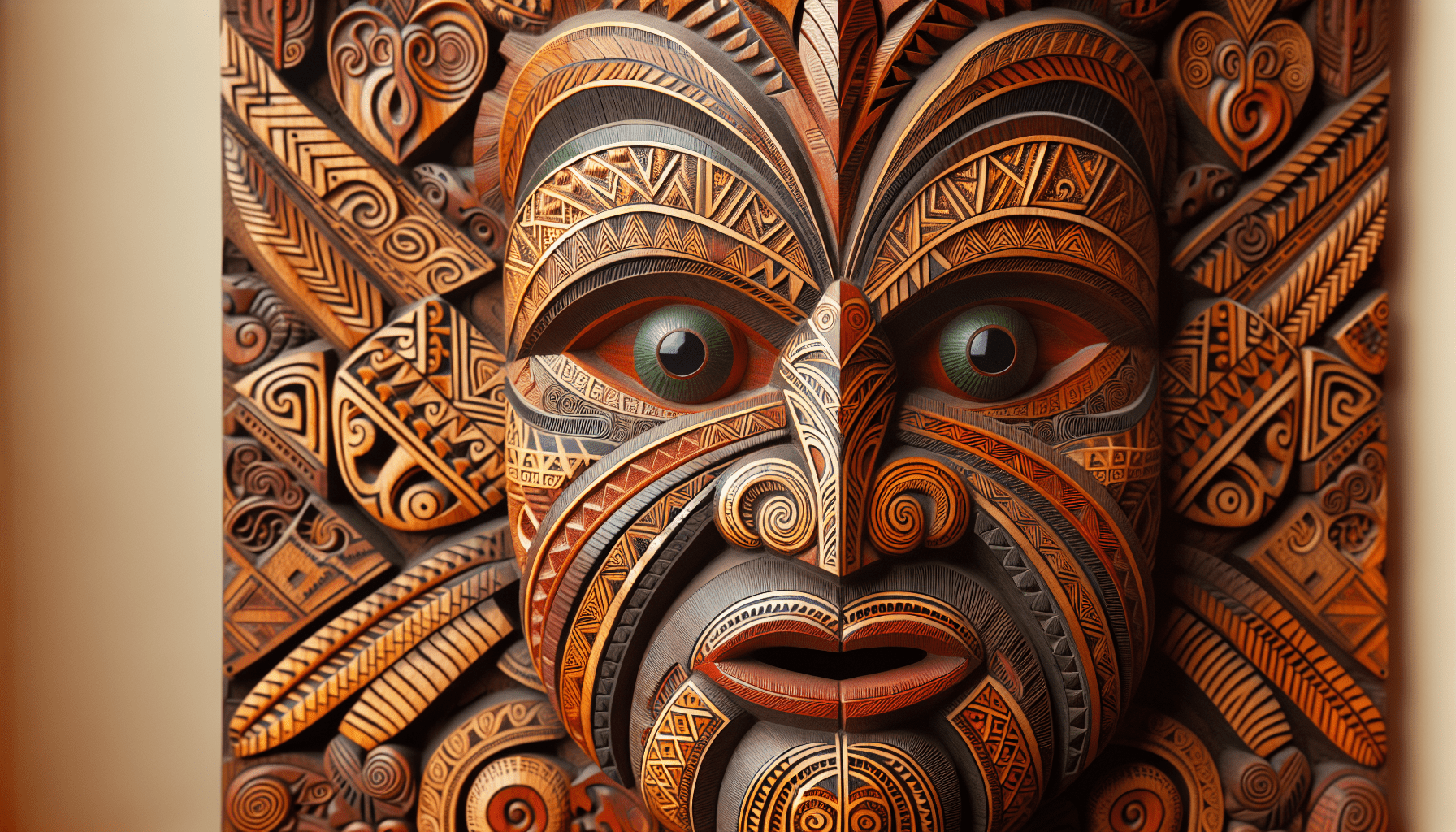Are you ready to embark on a fascinating journey to uncover the vibrant and captivating world of the Maori culture in New Zealand? Prepare to be enchanted by the stories, traditions, and unique customs that have shaped this indigenous community for centuries.
From their rich history and spiritual beliefs to their remarkable art forms and mesmerizing performances, the Maori people invite you to explore the depths of their culture and unlock the hidden treasures that lie within their vibrant heritage.
Get ready to immerse yourself in an unforgettable experience as you delve into the heart and soul of the Maori in New Zealand.

History of the Maori
Origins of the Maori people
The Maori people are the indigenous Polynesian people of New Zealand. It is believed that they originated from eastern Polynesia and arrived in New Zealand around 1300 AD. The exact origins of the Maori people are still a subject of debate among scholars, but their connection to other Polynesian cultures and languages is evident. The Maori have a rich and fascinating history that spans over centuries.
Arrival in New Zealand
The Maori people arrived in New Zealand on canoes, known as waka, which were navigated across vast oceans. These waka carried the early settlers and their belongings, including essential tools, animals, and food supplies. The journey to New Zealand, also known as Aotearoa in Maori, was perilous and required tremendous skill and courage. Despite the challenges, the Maori people successfully navigated through treacherous waters and arrived on the shores of New Zealand, where they established their settlements.
Maori legends and mythology
Maori culture is deeply rooted in legends and mythology, which play a significant role in their identity and understanding of the world. These stories have been passed down through generations and carry the wisdom of their ancestors. The Maori believe in a spiritual world where gods, spirits, and ancestors guide and protect them. These legends often explain the origins of the land, the stars, and different natural phenomena. The stories of Maui, the demigod who fished up the North Island of New Zealand, and Hine-nui-te-po, the goddess of death, are among the most well-known Maori legends.
Maori Language and Traditions
The significance of the Maori language
The Maori language, known as Te Reo Maori, is a vital element of Maori culture and identity. It holds immense cultural and historical importance, as it is the language through which Maori traditions, legends, and stories have been preserved. The Maori language is seeing a resurgence in recent years, with efforts to revitalize and promote its usage in schools, communities, and government institutions. By preserving and promoting the Maori language, the Maori people are preserving their heritage and ensuring the continued transmission of their rich cultural traditions.
Traditional Maori greetings and customs
Maori greetings and customs reflect the deep respect for others and the natural environment. The traditional Maori greeting, known as hongi, involves pressing one’s nose and forehead against another person’s when they meet. This act symbolizes the sharing of the breath of life, acknowledging the connection between individuals. Other customs include the exchange of haka, a powerful Maori dance, and the sharing of a hongi.
Haka – the powerful Maori dance
Perhaps the most well-known aspect of Maori culture is the haka, a powerful and intense traditional Maori dance. The haka is performed by Maori groups during various occasions, including special events, ceremonies, and sports competitions. With its origins steeped in ancient Maori traditions, the haka serves as a display of strength, unity, and cultural heritage. The dance involves vigorous body movements, rhythmic chanting, and facial expressions that convey both challenge and respect. The most famous haka is the “Ka Mate,” performed by the New Zealand national rugby team, the All Blacks, before their matches.
Maori Art and Crafts
Traditional Maori carving and sculpting
Maori art is renowned for its intricate carving and sculpting, done predominantly on wood and bone. The Maori people possess exceptional skills in carving, often creating detailed designs and patterns that represent their culture, legends, and spiritual beliefs. These carvings can be found on buildings, canoes, weapons, and various household items. The intricacy and symbolism behind Maori carvings make them not just decorative pieces but also important cultural artifacts that tell stories and hold spiritual significance.
Flax weaving and basketry
Flax weaving, known as raranga, is another traditional Maori art form that has been practiced for centuries. Flax, a plant native to New Zealand, is carefully harvested, dried, and woven into various items such as baskets, mats, and clothing. Flax weaving is a complex and time-consuming process that requires patience, skill, and creativity. The resulting woven pieces often feature intricate patterns and designs, which hold cultural and symbolic meanings for the Maori people.
Ta moko – Maori tattoos
Ta moko is the art of Maori tattooing, a practice that dates back centuries. Unlike traditional tattoos, which are done using needles, ta moko is created by carving into the skin using chisels. These intricate patterns and designs are not simply decorative but represent the individual’s identity, genealogy, and social status. Ta moko is highly respected within Maori culture and is considered a sign of strength, heritage, and beauty. Today, many Maori people proudly display their ta moko as a way to connect with their cultural heritage.
Maori Cuisine and Traditional Food
Hangi – traditional Maori feast cooked in earth ovens
Hangi is a traditional Maori cooking method that involves preparing a feast in an earth oven. The earth oven, known as a hangi pit, is a hole dug into the ground and lined with hot stones. The food, including meat, vegetables, and kumara (sweet potatoes), is placed on top of the hot stones and covered with leaves and dirt. The food is then slow-cooked in this natural steam oven, resulting in flavorful and tender dishes. Hangi not only provides a delicious meal but also serves as an important cultural practice that brings family and community together.
Kai – traditional Maori food
Kai is the Maori term for food, encompassing the traditional dishes and ingredients that have sustained the Maori people for generations. Seafood, including fish, shellfish, and seaweed, plays a significant role in Maori cuisine due to New Zealand’s abundant coastal resources. Other staple foods include kumara, taro, and potatoes, which were introduced by Europeans. The Maori people have a deep connection with the land and sea, and their traditional food reflects their reliance on natural resources and their respect for sustainable practices.
Huhu grubs and other delicacies
While some traditional Maori foods may seem unusual to outsiders, they hold cultural and historical significance for the Maori people. Huhu grubs, the larvae of the huhu beetle, are considered a delicacy and are rich in protein. Additionally, toheroa, a type of shellfish, and kina (sea urchin) are considered delicacies in Maori cuisine. These unique food items showcase the Maori people’s resourcefulness and their ability to utilize the natural environment to sustain themselves.

Maori Performing Arts
Maori music and musical instruments
Maori music is an integral part of Maori culture and is deeply intertwined with their traditions and storytelling. Traditional Maori music often features chanting, rhythmic patterns, and the use of musical instruments such as the pūtatara (conch shell trumpet), the pūrerehua (bullroarer), and the kōauau (flute). These instruments, made from natural materials such as wood, bone, and shells, produce unique sounds that enhance the cultural significance and spiritual essence of Maori music.
Kapa haka – Maori performing arts groups
Kapa haka refers to the performance of traditional Maori songs, dance, and storytelling. These performances are carried out by kapa haka groups, which consist of individuals of all ages who showcase their cultural pride and skills. Kapa haka combines music, dance, chanting, and expressive movements to convey stories and emotions. The performances are characterized by energetic and synchronized movements, showcasing the strength, unity, and cultural identity of the Maori people.
Tales and performances of Maori folklore
Maori folklore consists of a vast collection of myths, legends, and stories that have been passed down through generations. These tales often feature mythical creatures, powerful deities, and epic journeys. The performances of Maori folklore, whether through storytelling, dance, or theater, provide a captivating glimpse into the rich cultural heritage of the Maori people. Each performance is an opportunity to preserve and celebrate these ancient stories, ensuring that they continue to be cherished by present and future generations.
Maori Tribal Structure
Iwi – Maori tribal groups
The Maori people are organized into various tribal groups known as iwi. Each iwi has its own distinct traditions, history, and ancestral connections to specific regions of New Zealand. Iwi function as self-governing entities and play a crucial role in the social, cultural, and political life of their members. They are responsible for upholding the customs, values, and tikanga (protocols) of their respective iwi, ensuring the continuity of Maori traditions within their communities.
Whanau – Maori family units
At the core of Maori society is the whanau, the family unit. Whanau encompasses more than immediate family members and extends to include extended family, such as cousins, aunts, uncles, and grandparents. Whanau serves as a support system, providing a sense of belonging, love, and respect. Within the whanau, the passing down of cultural knowledge, language, and traditions occurs, ensuring the preservation of Maori customs and values for future generations.
Importance of genealogy and ancestry
The Maori place great value on genealogy and ancestral connections. They maintain detailed genealogical records, known as whakapapa, which trace their lineage back to their earliest ancestors. These records serve as a link between past and present, connecting individuals with their Maori identity and heritage. The understanding of whakapapa is essential for the Maori people, as it informs their place within their iwi, their roles and responsibilities, and their interconnectedness with the land and the natural world.
Maori Land and Treaty of Waitangi
Importance of land to the Maori
Land holds immense importance to the Maori people, as it is seen as a crucial part of their cultural identity, heritage, and spirituality. For the Maori, land is not merely a resource to be exploited but a taonga (treasure) to be respected and protected. The connection to the land is deeply rooted in Maori culture and is fundamental to their well-being, customs, and way of life.
The Treaty of Waitangi – Maori and British agreement
The Treaty of Waitangi, signed in 1840, is a pivotal document in New Zealand’s history that established a relationship between the Maori people and the British Crown. The treaty was intended to protect Maori rights, land, and resources while allowing for British colonization. It recognized the Maori as the original occupants of New Zealand and guaranteed the Maori their rights as citizens. However, the interpretation and implementation of the treaty have been a source of ongoing debate and conflict.
Land rights and settlements
Over the years, the issue of land rights has been a significant concern for the Maori people. The loss of land during European colonization and subsequent government policies resulted in the displacement of many Maori communities from their ancestral lands. In recent years, there have been efforts to address these grievances, with the government returning land and providing settlements to Maori iwi. These settlements aim to acknowledge and compensate for the historical injustices faced by the Maori people, allowing them to regain a sense of control and connection to their land.
Maori Spiritual Beliefs
Concept of tapu and noa
Tapu and noa are fundamental concepts in Maori spirituality. Tapu refers to sacredness or something being prohibited, while noa represents the lifting of that sacredness. The concept of tapu extends to people, objects, places, and natural phenomena. Observing tapu ensures the spiritual balance and order in Maori society, while noa is achieved through rituals, such as karakia (incantations) and wānanga (spiritual gatherings). Understanding and respecting tapu and noa is essential in Maori culture, ensuring harmony and connection with the spiritual world.
The importance of spiritual connection to nature
The Maori people have a strong spiritual connection to the natural world. They view themselves as a part of the environment, rather than separate from it. The land, rivers, mountains, and forests are considered living entities with their own mauri (life force). The Maori practice kaitiakitanga, the guardianship and responsible use of natural resources, to ensure the sustainability and well-being of the land and its inhabitants. This deep connection to nature is a core aspect of Maori spirituality and is reflected in their customs, rituals, and everyday practices.
Maori rituals and ceremonies
Maori rituals and ceremonies play a significant role in connecting individuals with their spiritual beliefs and cultural heritage. These rituals often involve karakia (incantations), waiata (songs), and physical actions to invoke the presence of gods, spirits, and ancestors. Ceremonies are conducted for various occasions, including births, weddings, funerals, and the opening and closing of important events. Through these rituals and ceremonies, the Maori people maintain a connection to their spiritual world, seek guidance and protection, and honor their ancestors.
Maori Sports and Recreation
Traditional Maori games and contests
The Maori people have a rich tradition of sports and recreational activities. Traditional Maori games, such as ki-o-rahi, pūtōrino, and rippa rugby, date back centuries and showcase physical skills, strategy, and teamwork. These games were not just for entertainment but also served as training for warfare and hunting. Today, there is a resurgence of interest in traditional Maori sports, with competitions and events held to preserve and celebrate these cultural practices.
Waka ama – Maori canoeing
Waka ama, or Maori canoeing, is a popular recreational activity that has its roots in traditional Maori culture. Waka ama involves paddling in outrigger canoes, known as waka, which require synchronization, strength, and endurance. This activity not only provides physical exercise but also fosters a sense of pride, teamwork, and connection to the water and coastal environments that hold great significance for the Maori people.
Whakairo rakau – wood chopping
Whakairo rakau, or wood chopping, is a traditional Maori activity that showcases strength, agility, and skill. This sport involves chopping, carving, and shaping wood using various tools, such as axes and adzes. Whakairo rakau competitions, which include events like log chopping and axe throwing, are held during festivals and cultural gatherings. This activity demonstrates the Maori people’s connection to the land, their resourcefulness, and their ability to transform natural materials into functional and beautiful creations.
Contemporary Maori Culture
Maori influence in modern New Zealand
The influence of Maori culture can be seen in various aspects of modern New Zealand society. The Maori language, art, music, and traditions have become integrated into mainstream culture. Maori place names and words are commonly used throughout the country, and Maori symbols and designs are seen in art, architecture, and fashion. The integration of Maori culture has enriched the national identity and serves as a reminder of the importance of preserving and celebrating the country’s indigenous heritage.
Revitalization of Maori language and culture
In recent years, there has been a significant push to revitalize the Maori language and cultural practices. Efforts have been made to promote the use of Te Reo Maori in schools, communities, and government institutions. Maori cultural festivals, language immersion programs, and educational initiatives have also played a crucial role in ensuring the continuity and preservation of Maori language and traditions. This revitalization movement aims to empower Maori communities, strengthen cultural identity, and promote a more inclusive and harmonious New Zealand society.
Maori in the arts and entertainment industry
Maori artists, musicians, writers, and performers have made significant contributions to the arts and entertainment industry in New Zealand and beyond. Maori art, with its distinctive designs and symbolism, is highly sought after and showcased in galleries and exhibitions worldwide. Maori musicians, such as the renowned band, Waiata Maori, have achieved international recognition, blending traditional Maori music with contemporary genres. Additionally, Maori actors, filmmakers, and writers have played a pivotal role in promoting Maori stories, perspectives, and cultural diversity through film, television, and literature.
Discovering The Rich Culture Of The Maori In New Zealand
In conclusion, the Maori people have a rich and vibrant culture that encompasses their history, language, art, cuisine, spirituality, and traditional practices. From their origins in Polynesia to their arrival in New Zealand, the Maori have embraced their unique heritage, preserving their language, traditions, and spiritual beliefs.
The Maori people’s deep connection to the land, their emphasis on family and ancestral connections, and their contribution to various aspects of New Zealand society make them an integral part of the nation’s identity. Through ongoing efforts to revitalize their language and culture, the Maori people continue to have a profound impact on their communities and the wider world.

